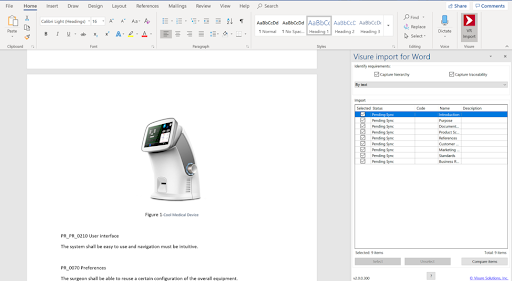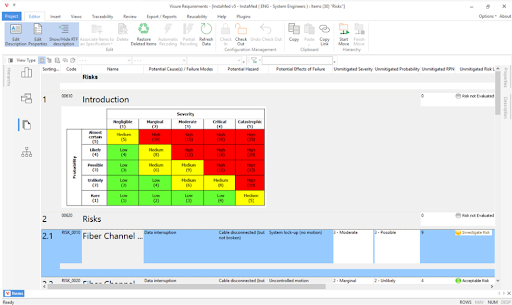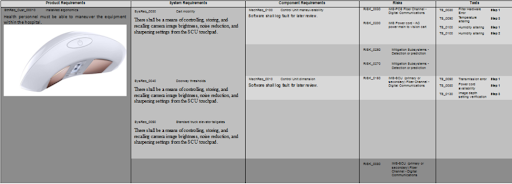Application Lifecycle Management | Complete Guide
What is Application Lifecycle Management (ALM)?
Table of Contents
We live in a software-driven world, where software engineering capabilities directly impact organizations’ ability to be successful. To shorten the speed of delivery, enhance agility, and increase product quality, among other things, organizations are constantly on the lookout for ways how to streamline all stages of the software application development life cycle, which is where application lifecycle management (ALM) tools come in.
Application Lifecycle Management (ALM) is a process of managing the development and deployment of software applications throughout their entire life cycle. This includes specifying, designing, developing, testing, and deploying the application. It also encompasses supporting the application after it goes live and ensuring that users have a positive experience. ALM is essential for organizations that want to ensure that their software applications are developed efficiently and effectively. In this article, we will provide a comprehensive overview of ALM including its definition, best tools, and phases.
What is Application Lifecycle Management?
Application Lifecycle Management is a complex procedure that involves different parties, recurrent processes, and various instruments that are used for regulating the complete lifecycle of the project from the very beginning to the end. ALM ensures the smooth running of the established methodologies of an organization and higher productivity through integrated tools.
In simpler terms, Application Lifecycle Management, abbreviated as ALM, is the procedure of specifying, designing, documenting, and testing the application. It covers the whole lifecycle from the start to the end of the project. It begins with the idea of the application throughout the development, goes to testing, deployment, support, and finally, the user experience.
Adopting application lifecycle management is essential for organizations in order to ensure prompt plus good quality releases keeping in mind the budget. Also, using traditional methods for lifecycle management like MS Office on one hand makes sense as it is cost-efficient as well as easy to get used to. But on the other hand, there are several drawbacks of using MS Office such as too much manual work, detecting issues can be a nightmare, and providing compliance is next to impossible. Hence, it is essential to use the right ADLM solution and give up traditional methods like MS Office.
Why is it important to use ALM?
The following 10 points will make you understand exactly why ADLM is important.
- Smooth Development Process – The development of any application requires standardized processes and documentation. Here, the ALM tool can be used as the sole centralized hub where we can keep all our resources. ALM enables any organization to streamline all the processes and resources in a single place and also provides an overview of the whole development process. This results in higher accountability, timely updates, and improved traceability.
- Preparing and Organizing the Development Process – ALM tools help manage the application development lifecycle. The planning phase begins as soon as the clients share their project requirements. With the help of ALM tools, you can draw up your plans more efficiently along with tools that fit your specific requirements. They can either support waterfall methodology or agile methodology or both.
- Maintain Budgets & Productivity – The first step in any planning is to set up a financial budget. Choosing methodologies that can potentially drain budgets and productivity is simply a stupid move. ALM integration eliminates the requirements for varied environments for testing. Also, with all-in-one software, review, and management become easier too.
- Team Management – Communicative and coordinated workspace deeply suits efficient and smooth software development. ALM can keep all the members on the same page with real-time strategies, changed requirements, and regular project status. Remote jobs are highly and positively affected by this.
- Speed + Quality – If the team does not collaborate appropriately, the chances for loopholes, delayed deliveries, and low product quality can increase. When you operate your project on ALM software, the integrated tools deliver the user requirements successfully, that too with high quality.
- Carrying the Load – There are high possibilities that the project might get stuck at some point. In such cases, apt choices and decisions are needed. ALM comprises the resources and processes in one tool which consequently, benefits the determination of solutions at each step.
- Employee Satisfaction – Employees show their dedication and interest through their productivity levels. Appreciating their efforts and choices is a must. ALM provides the freedom to the employees to use the tools and make their own choices and decisions. This keeps them motivated and satisfied, enhancing their productivity.
- Enhanced Team Productivity – Team productivity is of the utmost importance for a successful outcome in any project. ALM-integrated software helps in distributing and allocating tasks easily. Also, it helps to track productivity, quality, and progress regularly too.
- Fixing Bugs – Testing is done to make sure that the application has as few bugs as possible. ALM tools provide a platform for uniting the development and testing processes. This helps reduce the chances of loopholes and enhances the quality of the application.
- Customer Satisfaction – Every service by every organization strives in order to satisfy its customers. ALM tools help maintain high visibility and transparency among the service provider and the clients.
Phases of Application Lifecycle Management
ALM might split into various phases, depending on the methodology (Waterfall, Agile, or DevOps) you opt for. It is broadly divided into three phases, namely:
- Governance – This is to ensure that the project is built and carried out following the best project management practices. In this phase, it is also determined how the product would be serviced throughout its lifespan and how it would be disposed of at its expiration. It includes requirement management, resource management, data security, user access, review, verification, deployment control, and rollback.
- Development – This term actually refers to the recurring phase during ALM. This phase is considered to cover not only original creation but also ongoing developments such as revisions and upgrades. It includes identifying current problems, planning, designing, building, and testing the application.
- Operations – Also known as maintenance, this is the stage at which the developed product is finally deployed. It is important to follow the guidelines set under the ALM governance phase. It includes the deployment of the application and maintaining it off the technology stack.
Components/Stages of ALM
ALM has a few stages as well. They include:
- Requirement Management – This is the first and foremost step in the ALM cycle. During this stage, requirements are documented, analyzed, tracked, and prioritized. This process goes on throughout the whole lifecycle of the project.
- Design – During this stage, the usability of the project is improved in order to enhance the satisfaction and loyalty of the customers.
- Build Management – During this stage, the source code files are converted into standalone software components. Basically, the idea of the application turns into an actual application during build management. Application is built, tested, and deployed during this stage and testers commence drafting the test cases and test scripts for further testing of the application.
- Software Configuration Management – Abbreviated as SCM, is a stage when the deployment team works on the systematic organization and management of the project. They also control the changes that are made in the documents, codes and other entities during the ADLM.
- Operation and Maintenance Management – During this stage, basically the whole application is monitored and bugs are identified as well as resolved. Through this, you are able to plan and prioritize the next update on the project.
- Test Management – This stage is also known as the testing stage. The testers verify that the application is properly complying with the requirements stated during the initial processes.
- User Experience – This can be said as the longest stage in the whole ALM procedure. In this stage, the major participation of testers and developers is not required. Instead, the participation of users is highly important. They basically check out the whole application and share their feedback. After that, the final application is launched or delivered.
ALM Versus PLM, ELM, and ERP.
Application Lifecycle Management Vs Product Lifecycle Management:
PLM and ALM are two different concepts that have different roles to play. PLM deals with the product lifecycle from the very beginning to the end. ALM majorly deals with three concepts, namely, governance, development, and management.
The major difference between PLM and ALM are:
- PLM deals with more tangible stuff like material costs, workers, etc. In contrast, ALM deals with more intangible stuff like test cases, various issues, etc.
- ALM focuses on the effectiveness and efficiency of deliverables. In contrast, PLM focuses on products ranging in the bill of materials and configuration chain.
- The core building blocks of ALM include code files, defects, test cases, etc. In contrast, the core building blocks of PLM include hardware parts and electronic hardware systems embedded in most modern systems.
In a nutshell, both ALM and PLM have different roles to play but they both are great contributors to making the journey from an idea to a real product easier. When PLM handles the physical world, ALM backs it up by handling the non-physical world. Well, with that among various highly technical proliferation, the implementation of ALM and PLM is counted among the most successful ones.
Application Lifecycle Management Vs Enterprise Lifecycle Management:
The basic difference between Application Lifecycle Management (ALM) and Enterprise Lifecycle Management (ELM) is that ALM is a process that helps in managing the software development life cycle of an application while ELM is a process that helps in managing all the lifecycles of an enterprise.
Some other key differences between Application Lifecycle Management and Enterprise Lifecycle Management are:
- Application Lifecycle management is a process where one has to take care of the complete software development life cycle of an application, starting from its conception to its retirement. On the other hand, enterprise lifecycle management is a process where one has to take care of all the lifecycles of an enterprise, be it product lifecycle or project lifecycle, or any other lifecycle.
- Application Lifecycle Management is a process that is followed by the software development team of an organization while Enterprise Lifecycle Management is a process that has to be followed by every employee of an organization.
- Application Lifecycle Management deals with the management of an application while Enterprise Lifecycle Management deals with the management of all the processes and activities of an enterprise.
- Application Lifecycle Management is used for small to medium projects while Enterprise Lifecycle Management can be used for small as well as large projects.
- Application Lifecycle Management focuses on the development, testing, and deployment phases of software development while Enterprise Life Cycle Management focuses on all the aspects starting from planning to retirement.
Thus, we can say that Application Lifecycle Management is a subset of Enterprise Lifecycle Management. Application Lifecycle Management deals with the software development life cycle of an application while Enterprise Lifecycle Management deals with all the lifecycles of an enterprise.
Application Lifecycle Management Vs Enterprise Resource Planning:
Application Lifecycle Management (ALM) is a process that helps organizations manage the software development life cycle of an application while Enterprise Resource Planning (ERP) is software that helps organizations automate and manage all the business processes of an enterprise.
Some other key differences between Application Lifecycle Management and Enterprise Resource Planning are:
- Application Lifecycle Management is a process while Enterprise Resource Planning is software.
- Application Lifecycle Management helps in managing the complete software development life cycle of an application while Enterprise Resource Planning helps in automating and managing all the business processes of an enterprise.
- Application Lifecycle Management can be used for small to medium projects while Enterprise Resource Planning can be used for small as well as large projects.
- Application Lifecycle Management focuses on the development, testing, and deployment phases of software development while Enterprise Resource Planning focuses on all the aspects starting from planning to execution.
- Application Lifecycle Management is a process that is followed by the software development team of an organization while Enterprise Resource Planning is software that has to be used by every employee of an organization.
Thus, we can say that Application Lifecycle Management is different from Enterprise Resource Planning. Application Lifecycle Management helps organizations manage the software development life cycle of an application while Enterprise Resource Planning helps organizations automate and manage all the business processes of an enterprise.
Selecting the Right ALM Tool
These days, organizations have many options for selecting the right ALM tools for their needs. There are ALM tools with a narrower focus that are designed to integrate with other tools to cover the entire software application development lifecycle, and there are also full-featured ALM solutions that take care of everything.
Any ALM tool that describes itself as a full-featured solution should handle:
- Requirements Management
- Software Development
- Risk Management
- Test Management
- Issue and Defect Tracking
- Change Management
The tool should be flexible enough so that it can be easily integrated into existing workflows. Organizations that would like to switch from a Waterfall methodology to Agile should select an ALM tool that supports both and enables a gradual transition.
Reporting, built-in change auditing and notification, stakeholder collaboration, and workflow automation are other features to look for when selecting the right ALM tool.
ALM Tool Feature – Requirements Management

One of the key features of an ALM tool is requirement management, the process of documenting, analyzing, tracing, prioritizing, and agreeing on requirements. An ALM tool with requirement management capabilities allows multiple distributed stakeholders to collaborate inside a centralized requirement management platform, making it much easier for them to reach an agreement and get the ball rolling. The collaborating stakeholders can:
- Gather new or existing requirements: Some ALM management tools provide Import features from Microsoft Word and Excel or other requirements management platforms, such as IBM DOORS.
- To document requirements with screenshots, source files, and descriptions, … Being able to attach or link your requirement to other documents is a key capability. Depending on the technology of your requirement tool, you might have a few limitations.
- To analyze requirements. Analyzing requirements is definitely the key step in the Requirement Management process. There are multiple parameters to analyze including the upstream & downstream traceability, requirement quality, …
- To track requirements: An ALM should include traceability capability between requirements but also between requirements and tests, defects, and risks, … The tool traceability has to fit within your organization’s processes and not the opposite.
- Reach a final agreement One of an ALM’s requirements is to gather different teams together to arrive at a final agreement. To do so, the tool must provide collaboration features and workflows that are highly necessary to succeed in this objective.
ALM Tool Feature – Software Development
While ALM tools are not designed to replace traditional software development tools, they readily integrate with them to provide improved visibility across all stages of the software development process. Good examples of such integrations include VectorCAST, which helps developers tackle the complexities of embedded software testing by automating testing activities across the software development lifecycle, and Jira, a popular issue-tracking product that allows bug tracking and agile project management.
ALM Tool Feature – Risk Management

Many software development projects can have grave consequences unless they are carefully optimized, especially when it comes to software in medical devices, aerospace applications, and automotive. Many ALM tools treat risk management as an integral part of software development, aiding when it comes to the application of systematic techniques for failure analysis, such as failure mode and effects analysis (FMEA).
ALM Tool Feature – Test Management
The least costly bugs are those that get caught in testing, which can be either manual or automated. Leading ALM tools support both types of testing, and they integrate with software automation testing, which automates the tasks associated with the unit, integration, and system testing of C, C++, and Ada applications, among other things.
ALM Tool Feature – Issue and Defect Tracking
Keeping track of reported software bugs is an integral part of all software development projects, so it’s also an integral part of ALM. Instead of reinventing the wheel, some ALM tools integrate with proprietary issue-tracking products, such as Jira, which Australian Company Atlassian and develops has become popular among agile developers. The ALM tool has to be able to pull that information from a bug-tracking tool and trace it with the right requirements. That way it will make sure that all bugs, defects, and failed tests have been properly taken care of following the company’s standardized processes. Most ALM tools provide reporting capabilities that allow them to generate compliance reports.
ALM Tool Feature – Change Management

Ensuring that every team member is aware of any changes and understands exactly why they have been made prevents last-minute surprises, delivery delays, and potential project failures. ALM tools help schedule and implement change, process documentation for change and keep track of its effects. The end-to-end traceability of all requirements, tests, risks, and defects,.. allow the ALM tool to keep track of all change in the database.
Why Choose Visure as your ALM Tool?
Visure is one of the most trusted ALM platforms that specialize in requirements management for organizations of all sizes across the globe. The major partners of Visure include business-critical and safety-critical companies. Visure integrates through the whole ALM processes including risk management, issue and defect tracking, traceability management, change management, and various other areas like quality analysis, requirements versioning, and powerful reporting.
The features that are like the most about Visure include:
- Requirements Management – With Visure, you’ll be able to customize your requirements management process at any level, selecting specific items to get traced within the tool or between other automatic and bi-directional integration tools, such as Jira and UML Modeling. The configuration begins by creating your Data Models, which will serve as your process and workflow. As a result, this will enforce full traceability and compliance within all systems development teams and projects.
- Flexible User Interface – Visure guarantees the integration of the solutions with other tools that have already been implemented with open standards and connectors. Visure also provides personalized technical support to its clients and helps them implement initiatives that will help them improve their requirements management procedures.
- Risk Management – With the Visure FMEA extension, engineering teams gain a complete out-of-the-box solution that shows risks and their potential hazards in the project and their corresponding values for detection, severity, occurrence, and any required information such as potential.
- Quality Assistance – Our clients receive the best quality assistance from writing down your requirement models and providing on-premises services. Visure assists you when you can not trust the cloud for your private data. We also provide quality analysis for the requirements processes in your organization in order to ensure for things run as smoothly as possible.
- Integration – Data analysts can create relationships, generate hierarchies, manage traceability, and automatically capture requirements from MS Excel, Outlook, and MS Word. Visure also supports integration with other ALM tools like IBM DOORS and JIRA through Requirement Interchange Format OMG standards.
Conclusion
In conclusion, Application Lifecycle Management (ALM) is a vital process that streamlines the entire lifecycle of an application, from planning and design to deployment and maintenance. It provides a comprehensive approach to software development and ensures that the final product meets the needs of users. Visure Solutions offers a powerful set of ALM tools that help organizations automate tasks, improve collaboration, and gain real-time visibility into the status of their development projects. With our 30-day free trial, try Visure Solutions and see how they can help you develop better applications, faster. Don’t miss out on this opportunity to take your software development process to the next level.
Don’t forget to share this post!
Start Gaining End-to-End Traceability Across Your Projects with Visure Today
Start 30-day Free Trial Today!


